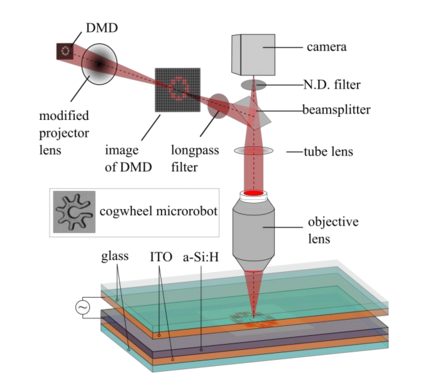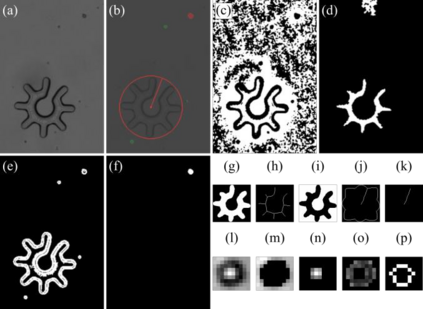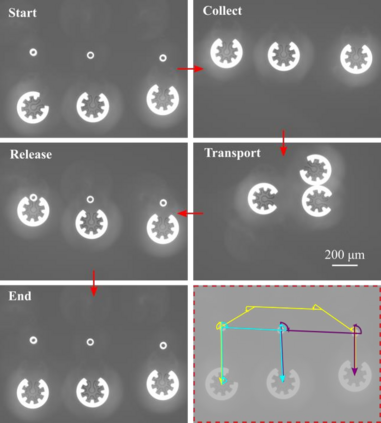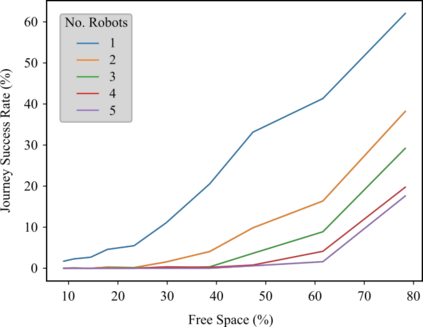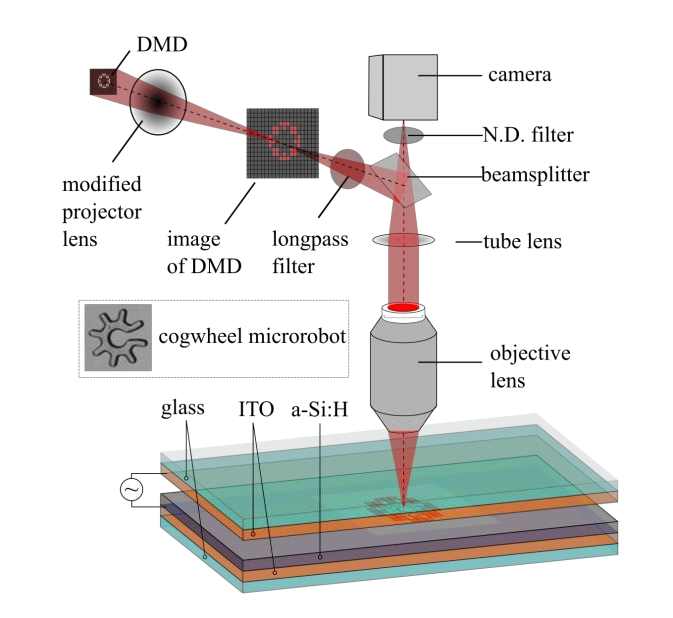Optoelectronic tweezer-driven microrobots (OETdMs) are a versatile micromanipulation technology based on the use of light induced dielectrophoresis to move small dielectric structures (microrobots) across a photoconductive substrate. The microrobots in turn can be used to exert forces on secondary objects and carry out a wide range of micromanipulation operations, including collecting, transporting and depositing microscopic cargos. In contrast to alternative (direct) micromanipulation techniques, OETdMs are relatively gentle, making them particularly well suited to interacting with sensitive objects such as biological cells. However, at present such systems are used exclusively under manual control by a human operator. This limits the capacity for simultaneous control of multiple microrobots, reducing both experimental throughput and the possibility of cooperative multi-robot operations. In this article, we describe an approach to automated targeting and path planning to enable open-loop control of multiple microrobots. We demonstrate the performance of the method in practice, using microrobots to simultaneously collect, transport and deposit silica microspheres. Using computational simulations based on real microscopic image data, we investigate the capacity of microrobots to collect target cells from within a dissociated tissue culture. Our results indicate the feasibility of using OETdMs to autonomously carry out micromanipulation tasks within complex, unstructured environments.
翻译:以光导电极光导电极利用光导电极光将小型电电结构(微型机器人)通过光导基底板移动成一个光导基质。微型机器人反过来可以用来对二次物体施加力力,并进行广泛的微操纵操作,包括收集、运输和储存微型货物。与替代(直接)复杂微管理技术相比,OETDMS比较温和,特别适合与生物细胞等敏感物体进行互动。然而,目前这种系统完全由人类操作者人工控制。这限制了多个微型机器人同时控制的能力,降低了实验性透镜和多式机器人合作操作的可能性。在文章中,我们描述了自动定位和路径规划的方法,以便能够对多个微型机器人进行开放式控制。我们展示了实际操作方法的性能,使用微机器人进行微操作,同时收集、传输和存储系统内部的磁性分析,并展示了我们内部的微软操作能力。我们用微机器人操作的方法,使用微电子计算机进行磁性模型,在实际操作中进行磁性分析,用我们内部的磁性模型分析,通过磁性模型分析,显示我们内部的磁力分析,显示我们内部的磁体分析能力。

